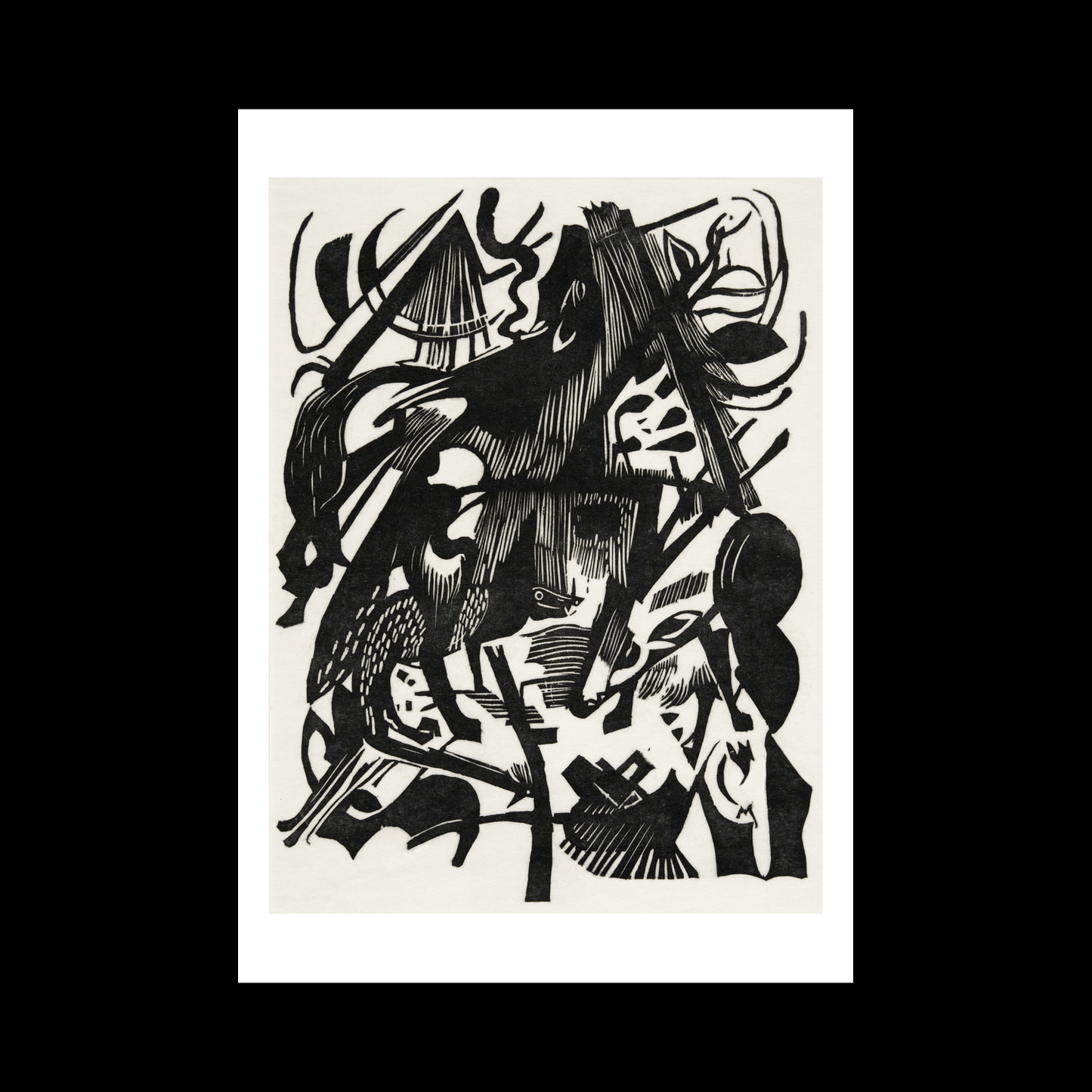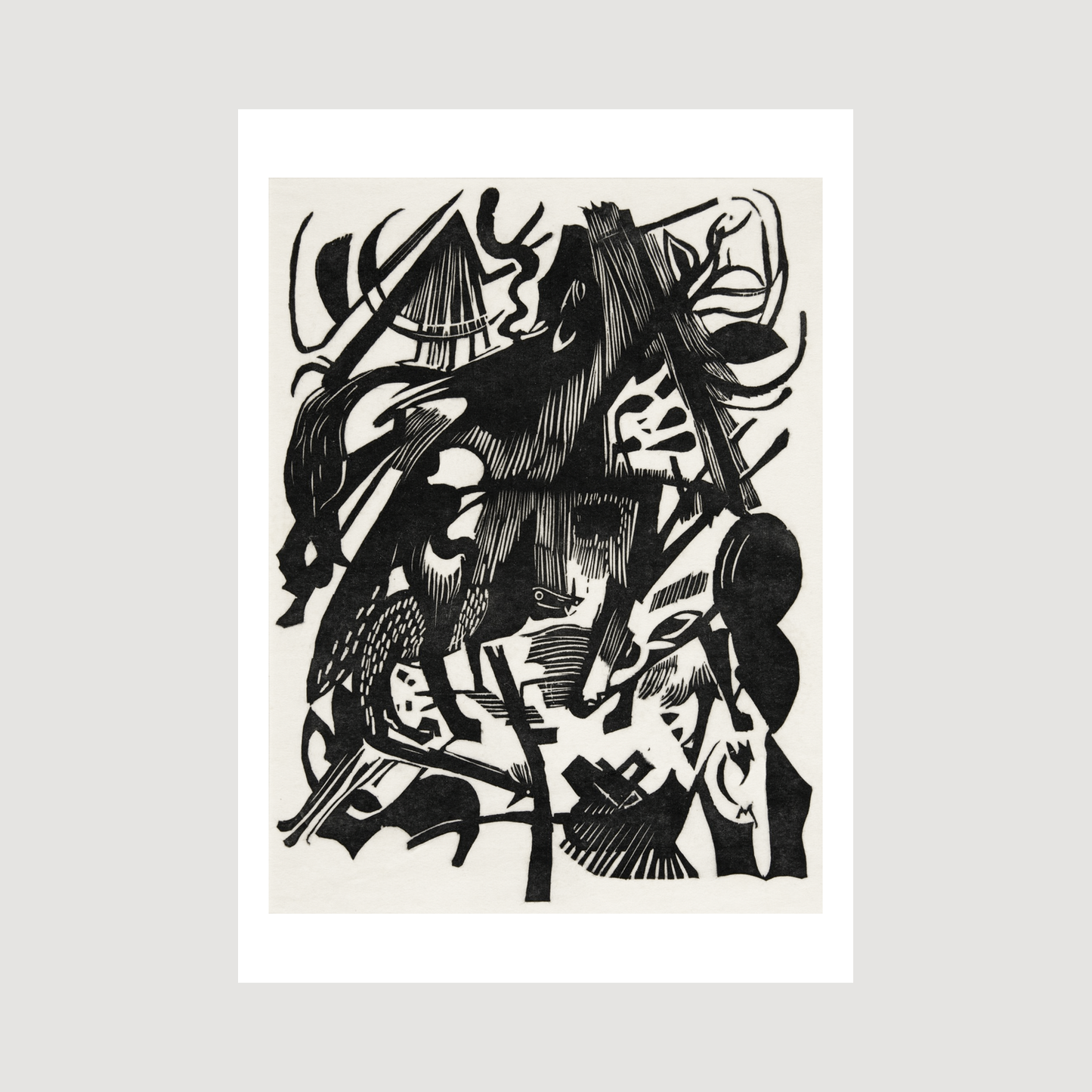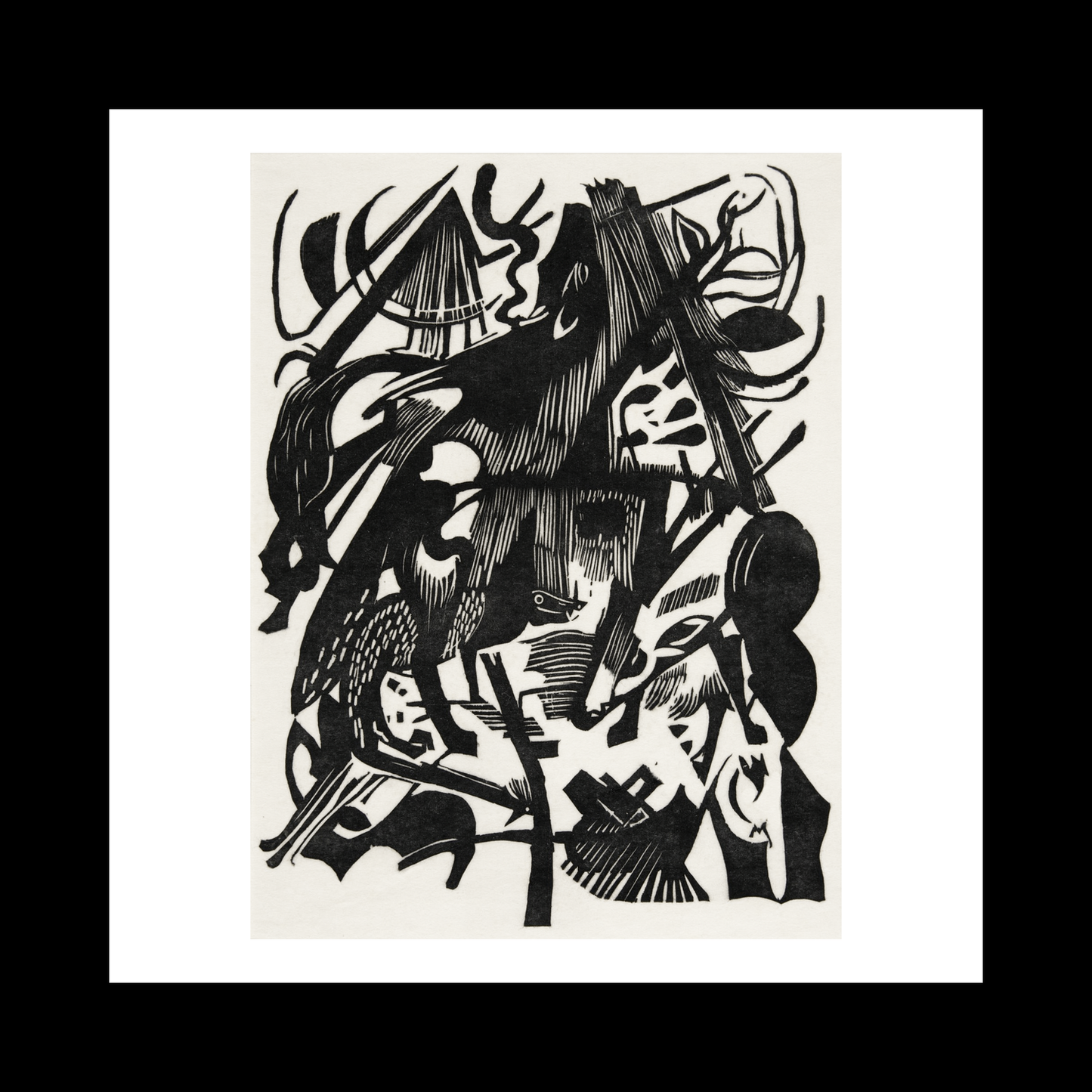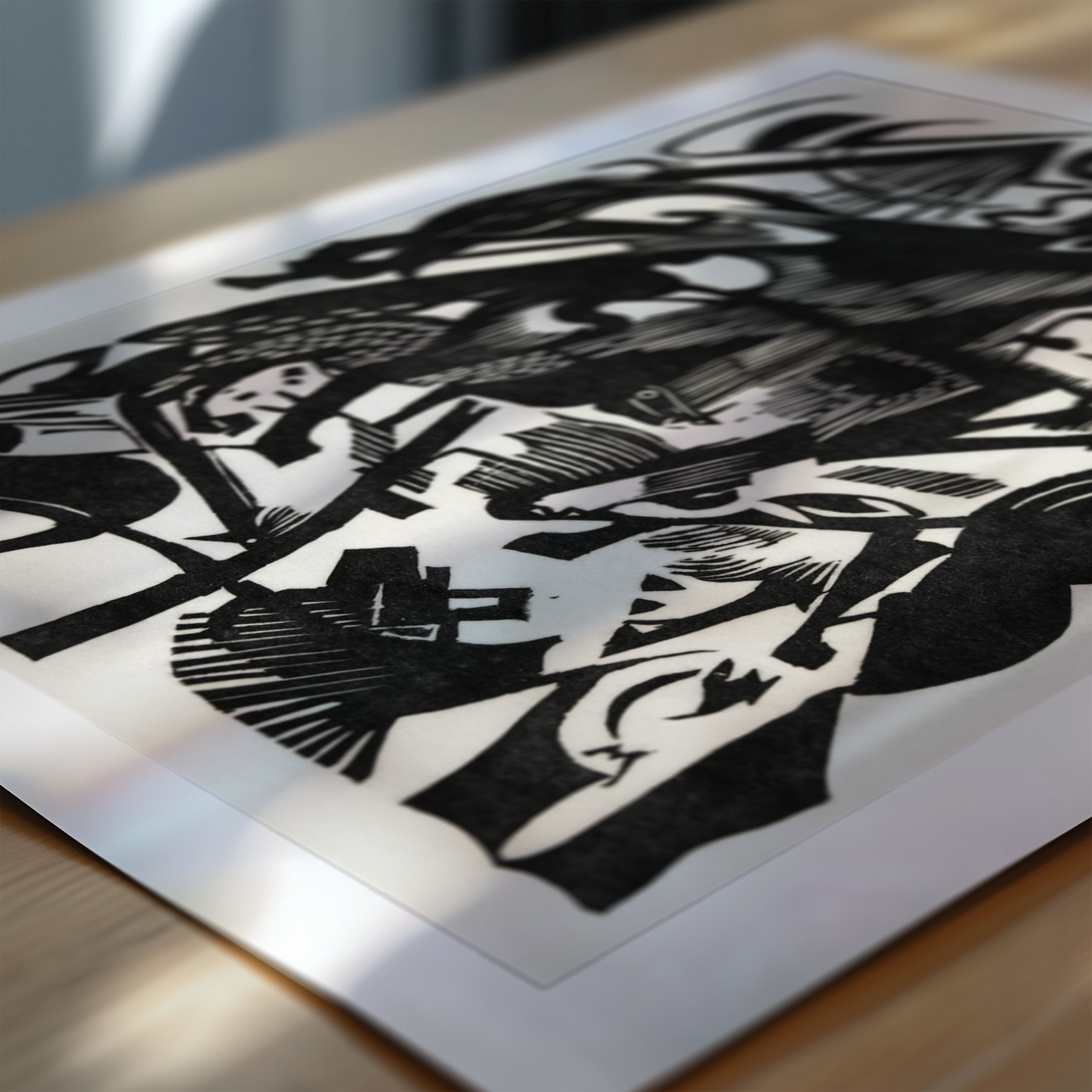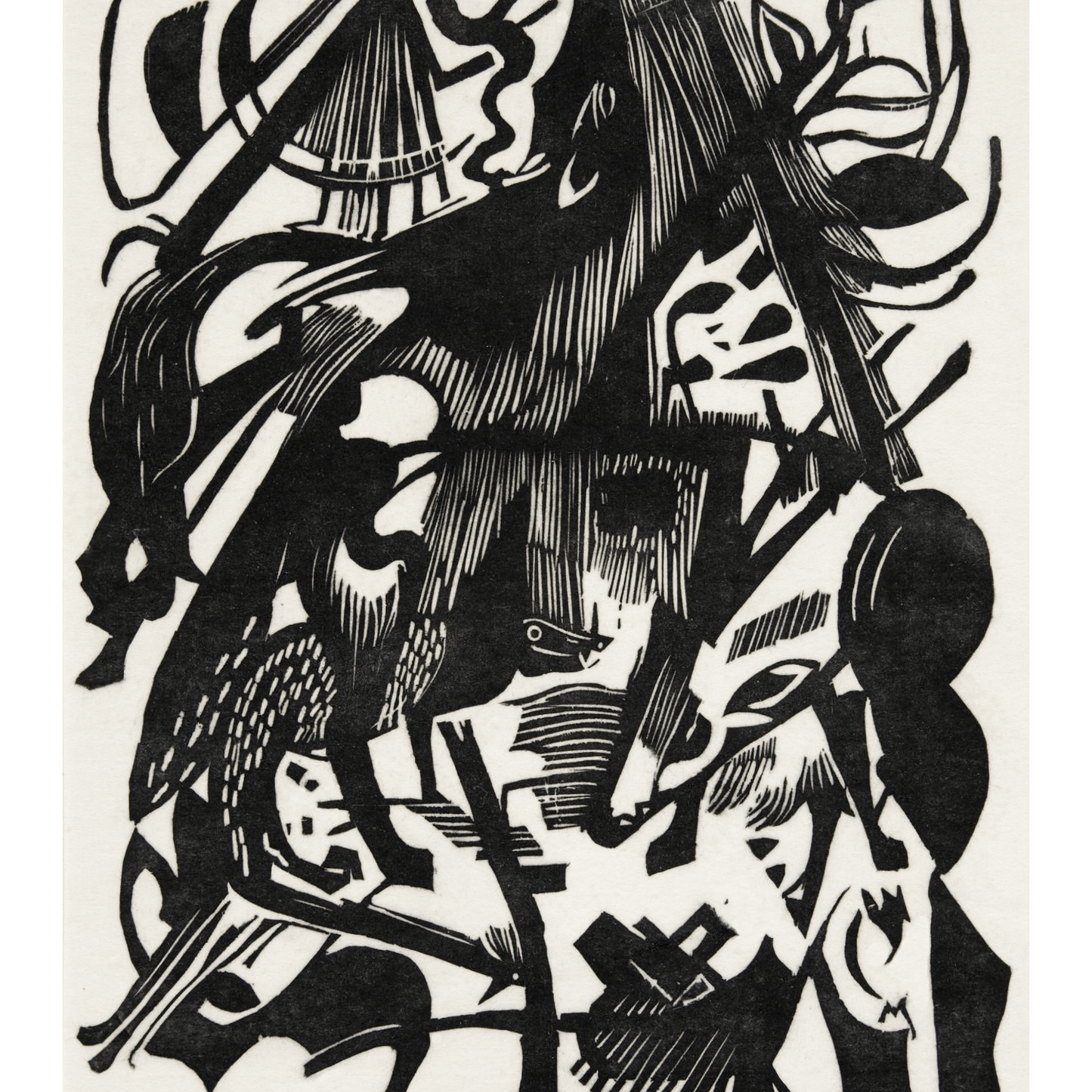1
/
of
6
Birth Wolves (1913) print high
Birth Wolves (1913) print high
Regular price
£12.45 GBP
Regular price
Sale price
£12.45 GBP
Taxes included.
Quantity
Couldn't load pickup availability
"Birth of the Wolves" (1913) by Franz Marc showcases the German Expressionist's distinctive approach to animal portraiture, rendered in bold, geometric forms and vibrant colours. The composition depicts wolves emerging from an abstract landscape, their bodies constructed through sharp, angular planes that create a sense of dynamic movement and primal energy. Marc's characteristic blue, yellow, and red palette transforms the natural world into an emotional and spiritual realm.
Marc, a founding member of Der Blaue Reiter movement, believed animals possessed a certain purity that humans had lost. This work reflects his deep spiritual connection to nature and his quest to capture the essence of creatures rather than their physical appearance. Created just before the outbreak of World War I, the piece embodies the artist's increasing concern about the future and his search for harmony in the natural world.
The technical execution demonstrates Marc's evolution from naturalistic representation to a more abstract style. His use of prismatic forms and intersecting planes shows the influence of Cubism, while his colour choices were deeply symbolic - blue representing masculinity and spirituality, yellow femininity and joy, and red the physical world and conflict. This piece particularly resonates as it was created during a pivotal period in Marc's career, shortly before his tragic death in the First World War, making it a powerful expression of his artistic philosophy and emotional state.
View full details
Marc, a founding member of Der Blaue Reiter movement, believed animals possessed a certain purity that humans had lost. This work reflects his deep spiritual connection to nature and his quest to capture the essence of creatures rather than their physical appearance. Created just before the outbreak of World War I, the piece embodies the artist's increasing concern about the future and his search for harmony in the natural world.
The technical execution demonstrates Marc's evolution from naturalistic representation to a more abstract style. His use of prismatic forms and intersecting planes shows the influence of Cubism, while his colour choices were deeply symbolic - blue representing masculinity and spirituality, yellow femininity and joy, and red the physical world and conflict. This piece particularly resonates as it was created during a pivotal period in Marc's career, shortly before his tragic death in the First World War, making it a powerful expression of his artistic philosophy and emotional state.
